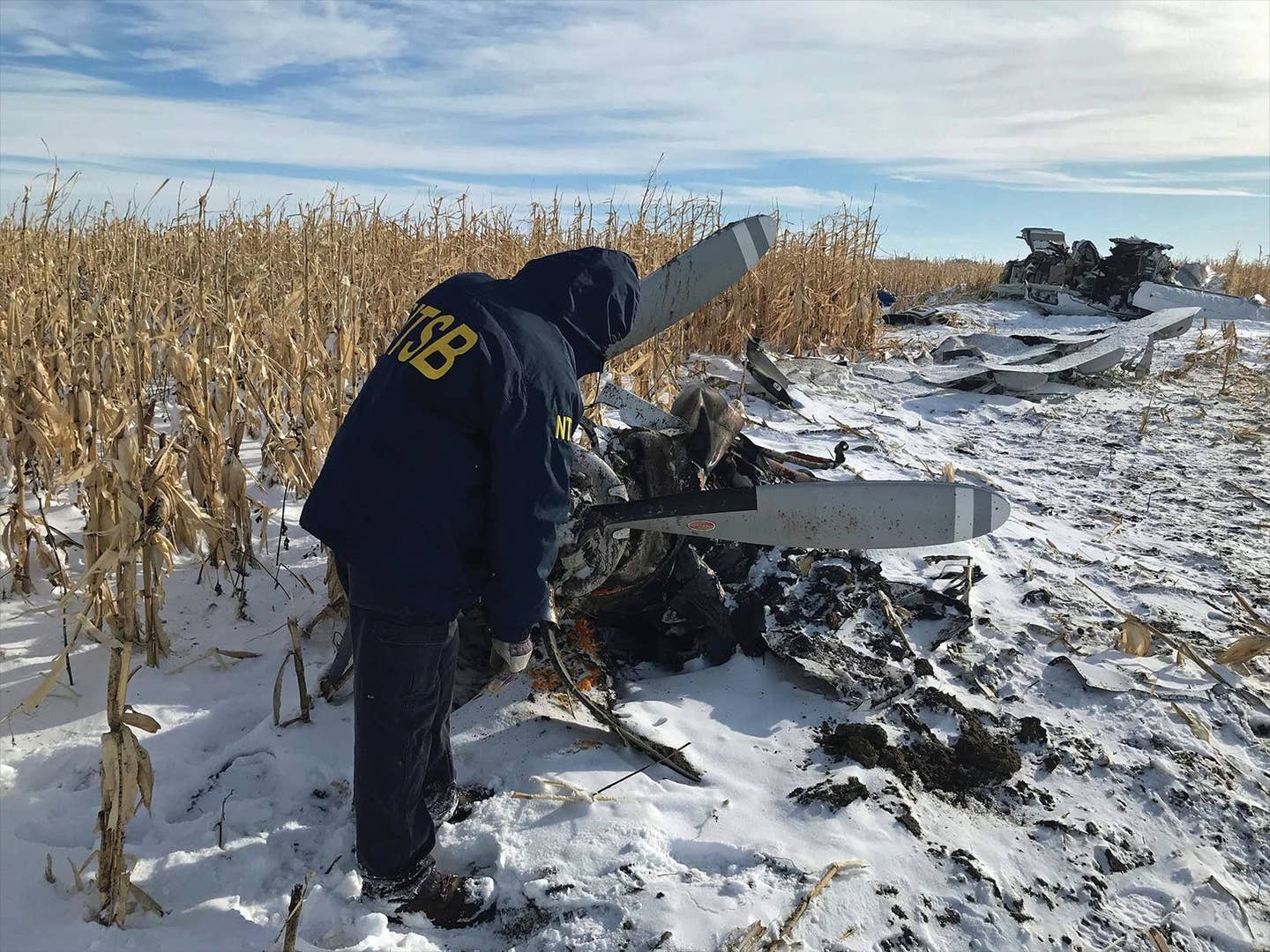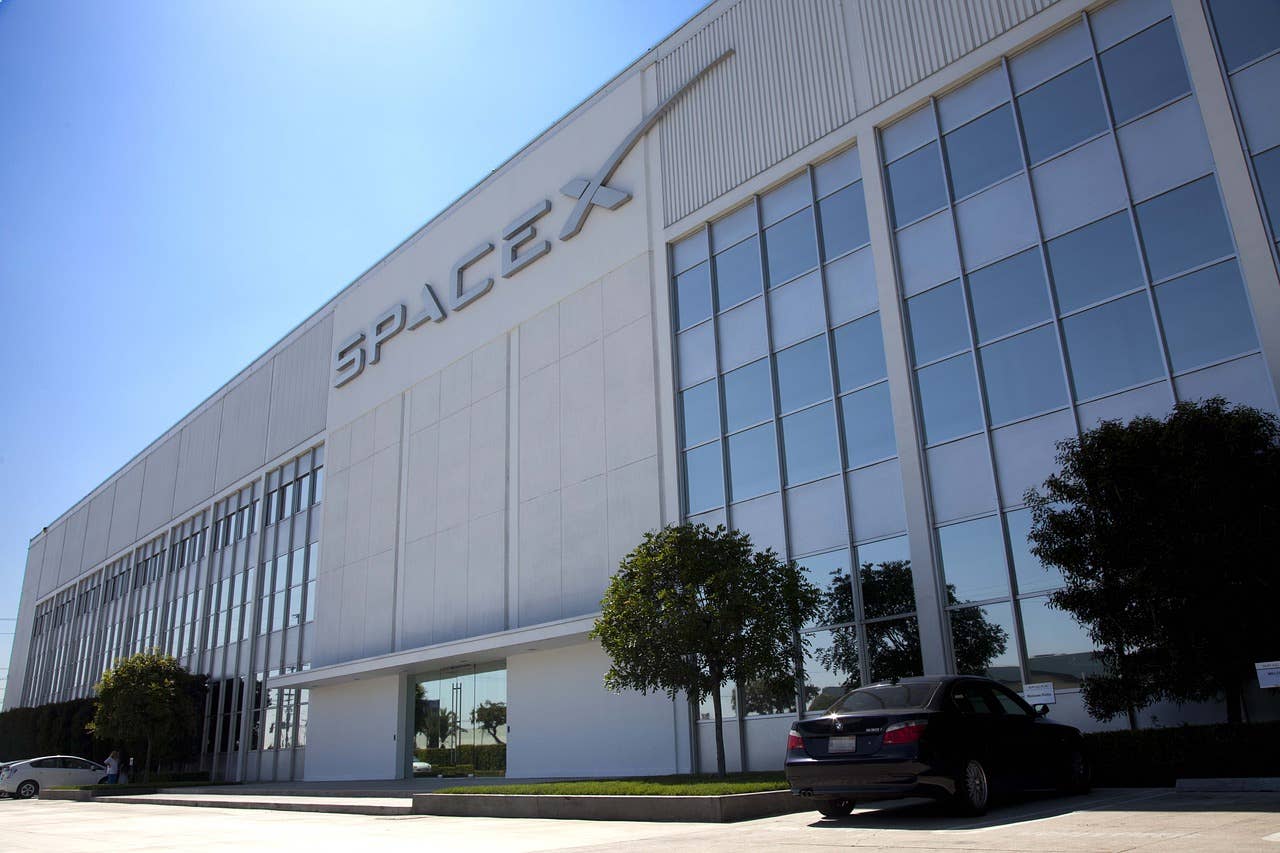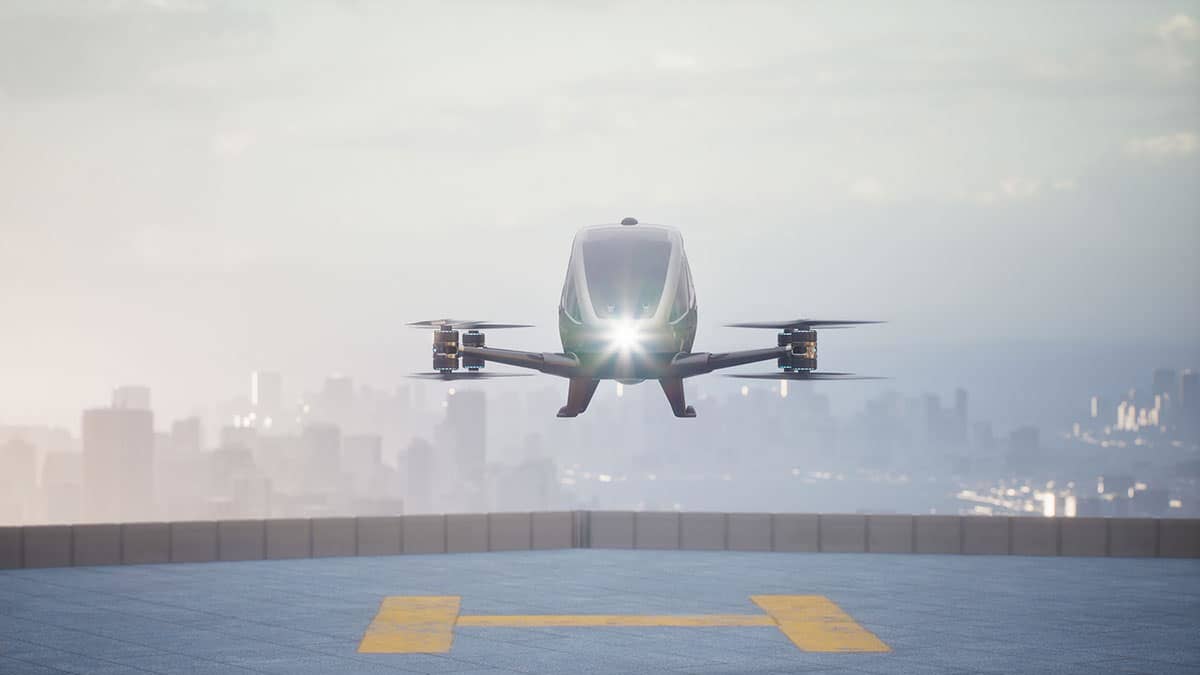Japan Airlines, Wisk Aero Partner to Launch Flying Taxi Service
The companies seek to deploy autonomous eVTOL aircraft into Japanese airspace.

Wisk Aero’s Generation 6 self-flying eVTOL will be able to seat up to four passengers. [Courtesy: Wisk Aero]
One of the largest airlines in the world could soon operate a line of self-flying aircraft.
On Tuesday, Mountain View, California-based Wisk Aero and Japan Airlines (JAL) announced a partnership that seeks to lay the groundwork for autonomous aviation. The companies are looking to certify and demonstrate Wisk’s electric vertical takeoff and landing (eVTOL) aircraft in Japan, working with that country’s government agencies to clear a flight path for air taxis nationwide.
The memorandum of understanding calls for collaboration between the two firms and the Japanese Civil Aviation Bureau (JCAB), among other agencies. Together, they plan to research the certification, maintenance, overhaul, and airspace integration of Wisk’s Generation 6 eVTOL with the aim of a demonstration flight and, eventually, the launch of a commercial fleet.
The planned air taxi service is one of several proposed by Japanese agencies, companies, and their partners in recent years.
“Japan represents a large, densely populated market where air taxi services can provide real, positive impact for local communities,” said Catherine MacGowan, director of Wisk’s APAC region. “We look forward to further pursuing the potential introduction of our self-flying, all-electric air taxis in Japan and are encouraged by the growing interest within the broader APAC region for these types of services.”
Wisk’s electric-powered air taxi has a range of 90 sm, with reserves, and a cruise speed of around 120 knots. Across its 36-foot wingspan are 12 tilt-rotor propellers, mounted ahead of the wings, which allow it to take off vertically before transitioning to cruise flight.
However, Wisk, which is backed by the likes of Boeing and Kittyhawk, is not the only eVTOL firm with an agreement to introduce air taxis to Japanese airspace. In fact, JAL itself has another agreement with German eVTOL maker Volocopter targeting an air taxi launch later this year, pending certification of the firm's VoloCity aircraft.
Meanwhile, competitor All Nippon Airways, which recently dethroned JAL as the country’s top airline, is working with U.S.-based Joby Aviation on its own air taxi service for the city of Osaka. Potential entries into that market also include Tokyo’s SkyDrive, which aims to launch a fleet of flying cars at the 2025 World Expo, and Osaka’s SkyTaxi, which just bought air taxis from Plana.
Across the Pacific, U.S. firms are also exploring passenger eVTOL services. Joby also has a partnership with Delta to launch air taxis starting with New York and Los Angeles, while American Airlines has a preorder for 250 flying taxis from Britain’s Vertical Aerospace. And just a month ago, United and Archer Aviation announced a partnership to create an air taxi route in Chicago.
It’s unclear when flying taxis in the U.S. and Japan will hit the market, but it’s likely to happen around the same time. That’s because the FAA and JCAB are cooperating on advanced air mobility certification and operations, sharing research and ideas to help get the industry off the ground.
Last week, the FAA released an updated blueprint for urban air mobility, describing a roadmap for air taxi integration near cities and airports. While the document is simply a guide and holds no legal weight, it should inform future policy and regulations around eVTOL aircraft—and it shows the FAA most definitely has air taxis on its radar.
Japan too is working with aviation stakeholders to develop its own regulatory framework for air taxis, aiming to introduce new rules by 2024 ahead of the Expo 2025 in Osaka and Kansai, where the government hopes to demonstrate an array of eVTOLs to the public.
2025 seems to be a good estimate of when air taxis will enter service—it’s the year JAL, Joby, SkyDrive, and others are targeting commercial launches, with additional companies only looking further out.
But even then, chances are that pilots are not in immediate danger of losing their jobs—early eVTOLs will likely be expensive and therefore niche, limited to applications such as tourism and private business flights. Wisk is one of only a handful of eVTOL companies attempting to remove the pilot from the aircraft entirely, though others could follow over the next decade.
So, don’t expect air taxis to become the norm any time soon. But if you’re curious about how they’ll eventually be integrated into airspace, keep an eye on Wisk, JAL, and others who are pushing for a new network of self-flying aircraft.

Subscribe to Our Newsletter
Get the latest FLYING stories delivered directly to your inbox






